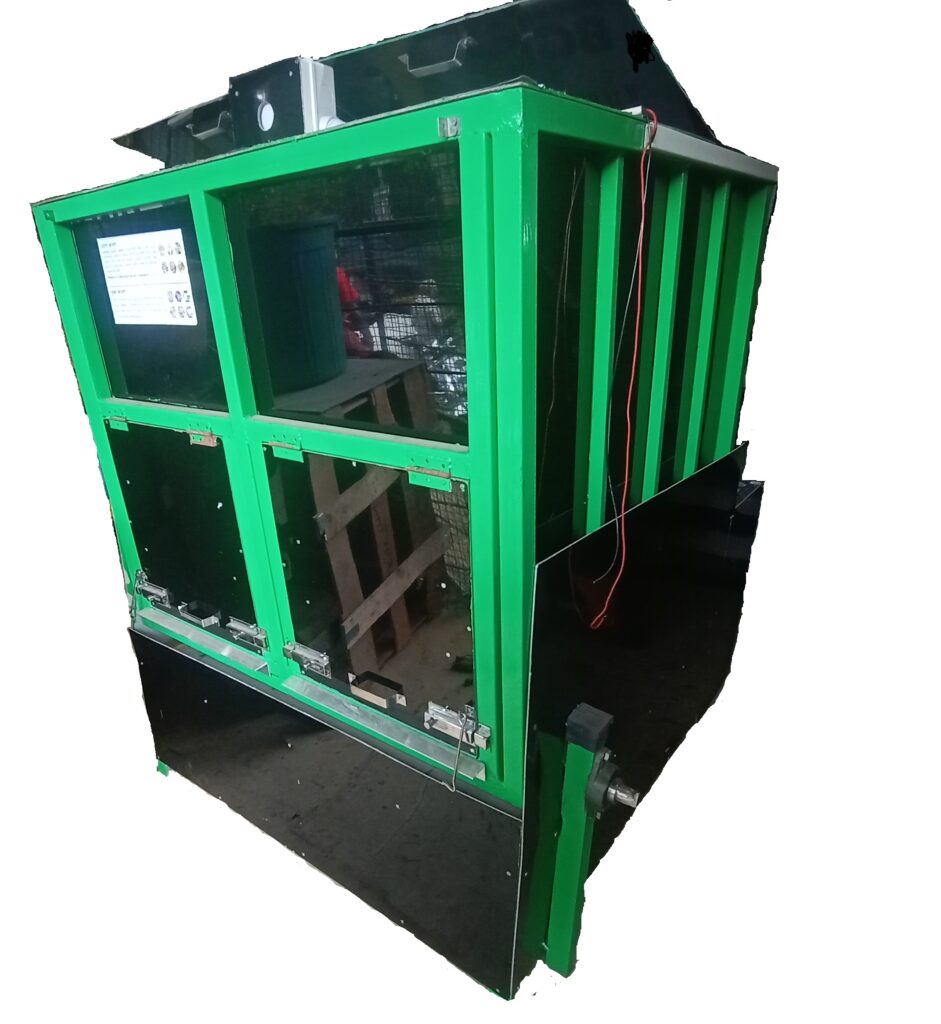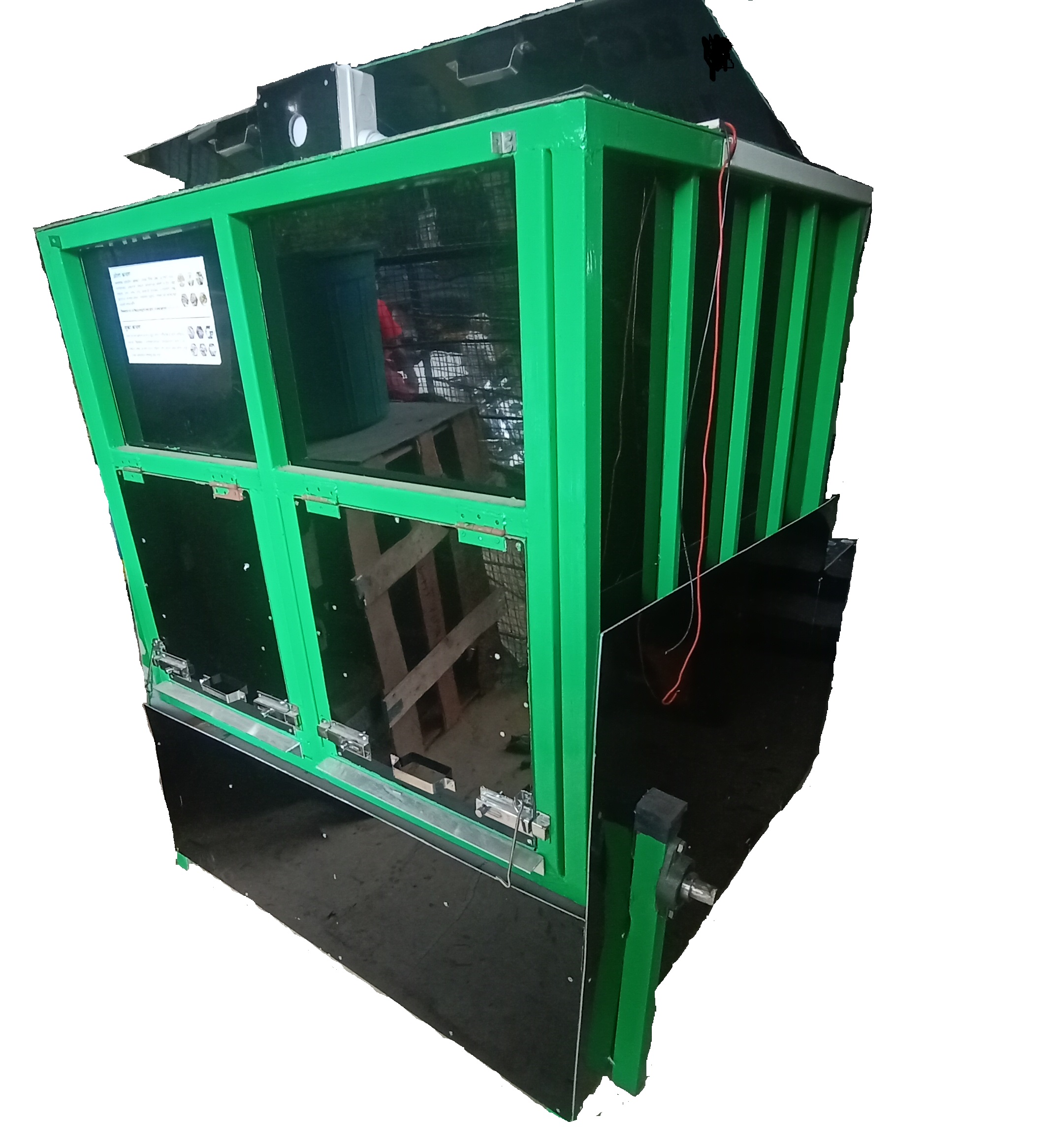Automatic OWC machine on solar Technology | Convert Waste to Compost by using solar OWC

OWC stands for “Organic Waste Converter,” which is a type of machine used for composting organic waste. An OWC machine is designed to accelerate the Natural decomposition process of organic waste materials, such as food scraps, garden waste, agricultural residues, and other biodegradable materials.
The working principle of an OWC machine involves creating an optimal environment for composting. It typically consists of a closed system with controlled temperature, moisture, and airflow. The machine provides favorable conditions for the growth and activity of microorganisms responsible for the decomposition of organic matter.
We have The best OWC machine which is giving you the natural compost with natural process. This Automatic Solar Compost machine have low maintenance cost with easy and simple operation, also in this machine electrical option is provided.
Solar Compost Machine is one of the machine which is used to convert organic waste into useful compost with natural process. Whenever you are going to make compost at that time you need some technical things to do composting.
To make compost with an OWC (Organic Waste Converter) machine, follow these steps:
- Preparation: Gather your organic waste materials, such as fruit and vegetable scraps, coffee grounds, tea leaves, eggshells, and yard waste like leaves and grass clippings. It’s important to avoid adding meat, dairy, oily items, or pet waste to the compost pile.
- Shredding: If the waste materials are large or bulky, consider shredding or chopping them into smaller pieces. This will help speed up the decomposition process.
- Layering: Start by adding a layer of dry, brown material like dried leaves, straw, or shredded newspaper to the OWC machine. This provides aeration and helps absorb excess moisture. Next, add a layer of green material, such as kitchen scraps or fresh grass clippings.
- Moisture management: It’s important to maintain the right moisture level in the compost pile. The ideal moisture content is similar to that of a squeezed-out sponge. If the material is too dry, sprinkle some water, and if it’s too wet, add more dry material.
- Turning: OWC machines often have built-in mechanisms to automatically turn the compost pile. However, if your machine doesn’t have this feature, make sure to turn the pile regularly using a compost turner or pitchfork. Turning the pile aerates it, helping the decomposition process.
- Monitoring: Keep an eye on the compost pile’s temperature and odor. The internal temperature should reach around 130-160°F (55-70°C) within a few days, which indicates the breakdown of organic matter. If there are foul odors, it may indicate an imbalance in the compost pile. Adjust the moisture or carbon-to-nitrogen ratio (C/N) by adding more dry or green material accordingly.
- Curing: Once the composting process is complete, which typically takes several weeks to a few months, the compost should have a dark, crumbly texture and an earthy smell. Transfer the finished compost to a curing bin or pile, where it can mature and stabilize for a few more weeks before use.
Remember to refer to the specific instructions provided by the manufacturer of your OWC machine, as different machines may have slight variations in operation and capacity.
Above all criteria full fill by Solar Powered Compost Machine, which work on Principle of Heating , Mixing Ventilation Techniques. you can use another method of Composting also , there are several method of decomposition , but using solar we are providing more aeration to composting process.
Also Read: Low Cost Manual Waste Shredder | Waste shredder manual
Why we need OWC machine on solar ?
OWC machine on solar is best machine which provide heat , mixing mechanism & aeration process for composting and make good quality Compost.
Using an OWC (Organic Waste Converter) machine with solar power is an excellent way to make compost while reducing your environmental impact. Here’s a general guide on how to set up an OWC machine on solar power:
- Assess your energy needs: Determine the power requirements of the OWC machine you have or plan to acquire. This information should be available in the machine’s specifications or user manual. Note the wattage or power consumption to understand the solar setup you’ll need.
- Solar panel selection: Choose solar panels based on your energy needs. Consider the power rating, efficiency, and physical size of the panels. Ensure they can generate enough electricity to meet the requirements of your OWC machine.
- Calculate the solar system size: To determine the appropriate solar system size, consider factors such as the machine’s power consumption, the number of hours it operates, and the available sunlight in your location. You may want to consult a solar professional or use online solar calculators to estimate the number of solar panels and batteries required.
- Install solar panels: Install the solar panels in a location that receives ample sunlight throughout the day, ideally facing south (in the Northern Hemisphere) or north (in the Southern Hemisphere) for optimal solar exposure. Ensure the panels are securely mounted and angled correctly for maximum sunlight absorption.
- Connect the solar panels: Connect the solar panels in a series or parallel configuration, depending on the voltage and current requirements of your OWC machine. Follow the manufacturer’s instructions for wiring the panels properly and safely.
- Install a charge controller and batteries: A charge controller regulates the charge going into the batteries and protects them from overcharging. Install an appropriate charge controller for your solar system. Connect the batteries to the charge controller to store excess solar energy generated during the day for later use when the sun isn’t shining.
- Connect the OWC machine: Connect the OWC machine to the solar power system. Depending on the machine’s power requirements, you may need an inverter to convert the direct current (DC) power from the solar panels and batteries into alternating current (AC) power that the machine can use. Follow the manufacturer’s instructions for connecting the OWC machine to the power system.
- Monitoring and maintenance: Regularly monitor the performance of your solar-powered OWC machine to ensure it’s operating efficiently. Clean the solar panels as needed to remove dirt or debris that can reduce their effectiveness. Maintain the batteries according to the manufacturer’s guidelines for optimal performance and lifespan.
Note: It’s essential to consult a professional electrician or solar installer for proper system design, wiring, and safety considerations specific to your OWC machine and location. They can provide personalized advice and ensure compliance with local electrical codes and regulations.
for more details you can visit Klimrus or YouTube channel of Klimrus or Waste Disposal Idea.
if you liked this post then you share or comment , we will give you best Composting information about composting.
